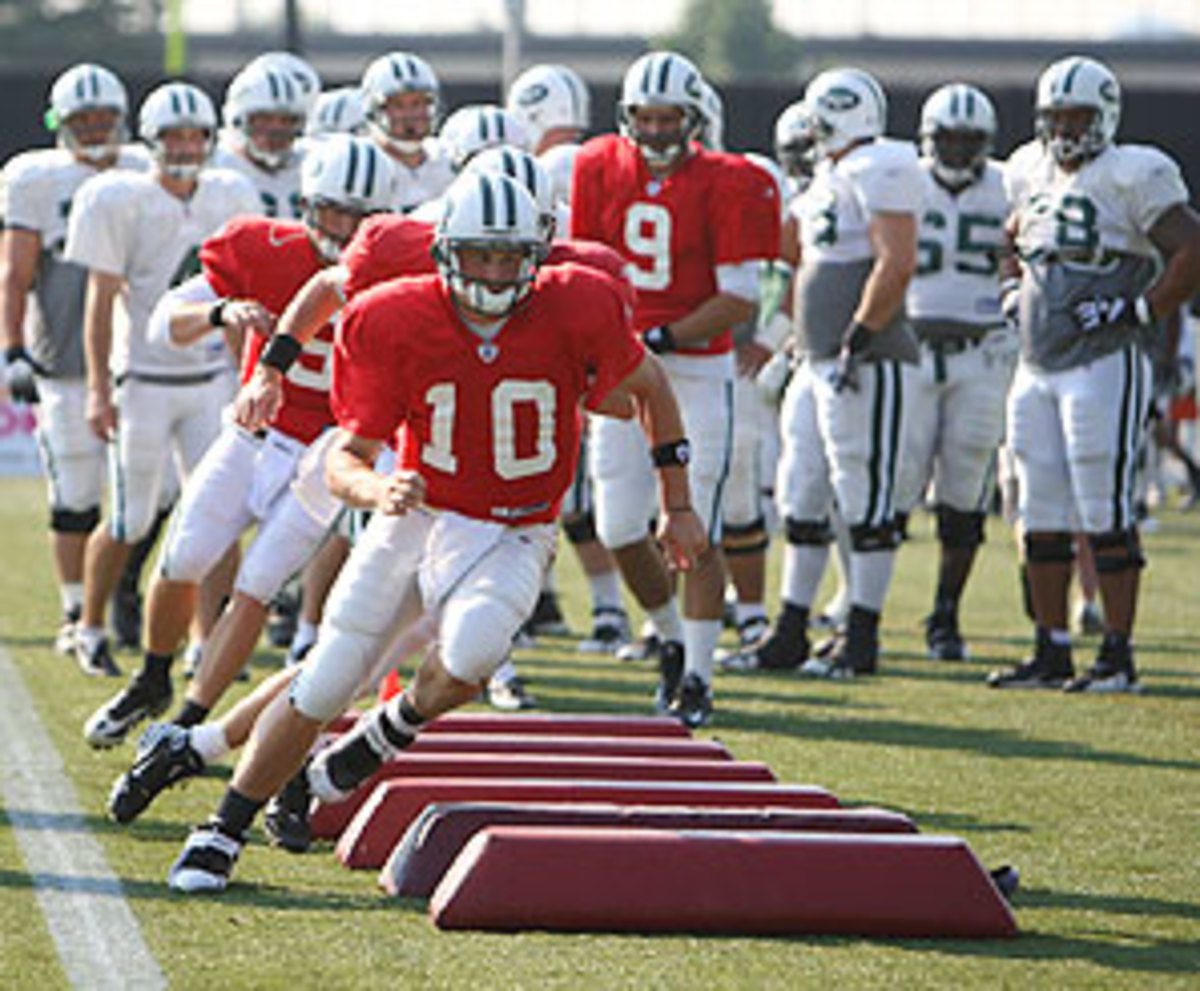Tuck's Takes: NFL teams should do away with two-a-day practices
With no football to play for the first time in 18 years, former pro Ross Tucker is passing the time reading about his favorite sport. What follows are a few links to NFL-related articles he found and his take on them.
NFL training camps aren't quite what they used to be. Back in the old days, teams would bring in 125 players for camp and sort out their 45-man rosters over a long, grueling stretch of two-a-day practices and six preseason games.
Thankfully, and mercifully, those days came to an end. Training camps have evolved to fewer two-a-day practices than ever as teams begin to weigh the risks and rewards. Dick Jauron is only holding two two-a-days for the Buffalo Bills this year and Eric Mangini has significantly reduced the practice time for the Jets after studying human performance with people involved with both the Australian Institute for Sport and the Tour de France.
Yet, some teams still believe in working their charges through the training camp grind.
Haloti Ngata is one of the latest Ravens to go down during coach John Harbaugh's physical camp at Westminster College in Maryland. He joins projected starting left tackle Jared Gaither and star running back Willis McGahee on the sidelines. Though all three may be fine for the opener, that is arguably one quarter of the 12 most important members of the Ravens sitting out.
Redskins starting defensive tackle Anthony Montgomery broke his hand recently, becoming the latest casualty on defense for Washington, who previously lost defensive ends Phillip Daniels and Alex Buzbee for the season. Coach Jim Zorn has publicly said he, like the Ravens' Harbaugh, wanted to set the tone for the season with an intense training camp that featured a lot of hitting.
It is not a coincidence that tough camps being run by new coaches like Zorn and Harbaugh are more likely to produce injuries. Though nobody has a crystal ball in which they can predict these incidents, simple math dictates the probability increases every time a team takes the field.
Aside from some of the first-time coaches looking to establish their identity and figure out which players on the roster have toughness and are "their" guys, more and more organizations are finally progressing to the point where they realize how fruitless a grueling training camp really is.
Today's dedicated athletes train year-round and the proliferation of mini-camps and OTAs makes the training camp installation much less relevant. Many coaches will tell you they want more practices in order to make roster decisions, but the truth is there are usually only five to eight spots at the bottom of the roster up for grabs in the first place.
Training camp should be about priming the pump for the opening game and making sure the players are mentally and physically prepared for the marathon that is an NFL season. It should not be about wearing down your most valuable assets before the real games even start.
The mindset some coaches attempt to establish during the dog days of summer might not mean a whole lot if several of your best players are hurt or less than their best for the games that actually count.
The recent news that Denver Broncos projected starting guard Montrae Hollandshowed up for camp overweight was not much of a surprise to those who have followed his career. What is a surprise is that the Broncos signed him in the first place. The road-grading, wide-bodied Holland, who spent his first four seasons with the Saints and reported to Broncos camp weighing 322 pounds, appears to be the antithesis of everything the Denver line has been known for the past 10 decade.
For years the Broncos relied upon svelte linemen who had the unique athletic skills to run laterally in order to cut off or cut down the defenders on the back side of their vaunted zone rushing attack. Svelte is not the best adjective to describe When Holland signed with the Broncos last season, many around the league wondered why the Broncos were going against what has always worked?
Broncos linemen like Tom Nalen and Ben Hamilton are well under 300 pounds. Their relative lack of bulk gives them the quickness to leverage defenders at both the first and second levels, opening up horizontal seams in the opposing team's defense. The Broncos lean blocking machine led to undrafted rookies and late-round picks becoming household names as they shot up the league's rushing charts. At times it seemed like whoever they put in the backfield would rush for over 1,000 yards.
But the signing of Holland was one of the first indications things were changing in Denver, and not necessarily for the better. The Broncos don't appear to run their outside zone schemes as effectively as they used to and their recent propensity for more drop-back passing with quarterback Jay Cutler leads to the offensive line at times being overpowered.
The Broncos can't have it both ways. If they want bigger linemen like Holland who can deliver some vertical push in the running game and strengthen the middle of the pocket in the passing game, then they should go that route consistently. It is the mixing and matching that seems out of whack.






